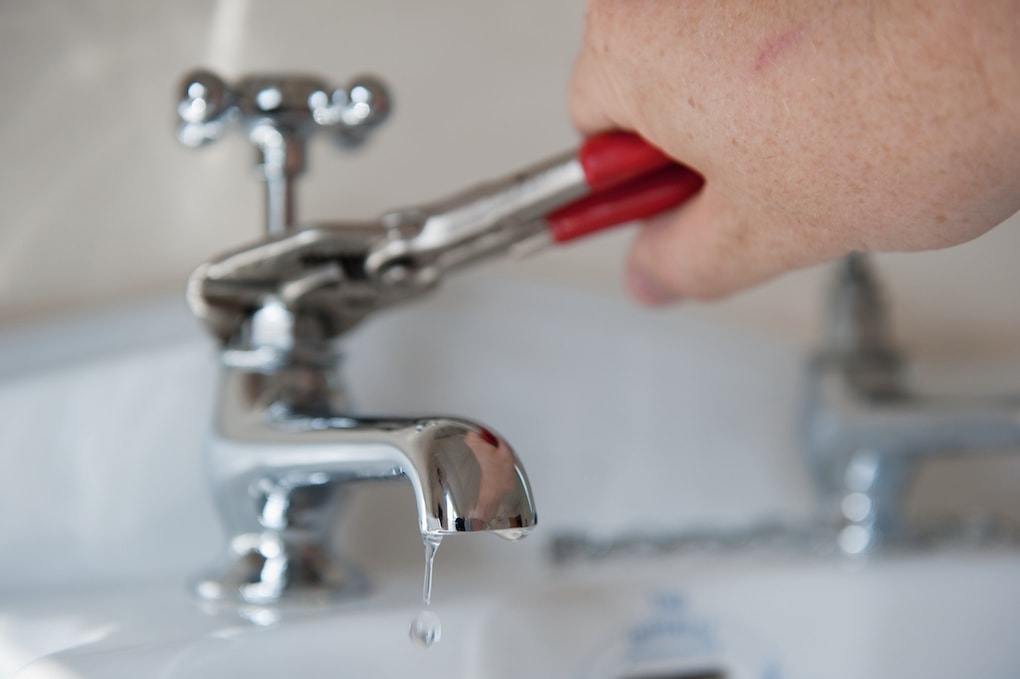Techniques to Address Low Water Pressure in Your Home
Techniques to Address Low Water Pressure in Your Home
Blog Article
Just how do you feel about 10 Reasons for Low Water Pressure in Your House?

Low water pressure in your house can be a discouraging issue, influencing everything from bathing to washing dishes. If you're experiencing weak water circulation, there are a number of possible reasons and solutions to discover. In this guide, we'll discuss usual reasons for low tide pressure and practical actions to attend to the issue effectively.
Intro to Low Water Pressure
Low water pressure happens when the circulation of water from your taps, showers, and other fixtures is weaker than normal. This can make everyday jobs much more tough and much less effective. Recognizing the reasons for low water pressure is important to discovering the appropriate option.
Typical Sources Of Low Tide Pressure
Faulty Stress Regulators
Stress regulators are responsible for maintaining regular water stress in your home. If they malfunction, it can result in low water pressure or uneven flow throughout your house.
Local Water System Issues
In some cases, the trouble exists outside your home. Local water system problems, such as main line leakages or upkeep job, can briefly lower water pressure in your area.
Pipeline Obstructions
With time, pipelines can end up being blocked with mineral deposits, sediment, or debris, restricting the flow of water. This is a typical concern in older homes with galvanized steel pipelines.
Corrosion
Deterioration within pipelines can cause leaks and minimized water pressure. Corrosion build-up can restrict water circulation, especially in maturing plumbing systems.
How to Diagnose Low Tide Stress
Inspecting Pipes
Inspect noticeable pipelines for indications of leaks, corrosion, or clogs. Take note of any kind of unusual sounds, such as banging or rattling pipes, which might suggest concerns within the plumbing system.
Consulting with a Plumber
If you're incapable to pinpoint the cause of low tide stress, think about employing a specialist plumber to conduct a comprehensive examination. They can recognize underlying problems and suggest suitable solutions.
Checking Taps and Components
Beginning by examining the water stress at different taps and components throughout your home. If the problem is separated to particular locations, it may indicate localized troubles.
DIY Solutions to Take Care Of Low Water Stress
Flushing Water Heater
Sediment build-up in the water heater can restrict circulation and minimize performance. Flushing the storage tank periodically assists get rid of debris and maintain ideal efficiency.
Checking Pressure Regulatory Authority
Guarantee that the pressure regulator is working properly. Readjusting or changing the regulator can help restore correct water stress throughout your home.
Cleaning Up Aerators and Showerheads
Mineral deposits can build up in aerators and showerheads, minimizing water flow. Get rid of and cleanse these components consistently to improve water stress.
Clearing Up Clogs in Pipes
For minor obstructions, try using a plumbing serpent or chemical drain cleaner to clear obstructions in pipes. Beware when utilizing chemicals and follow security guidelines.
When to Call an Expert Plumber
If do it yourself initiatives fall short to solve the concern or if you suspect significant plumbing issues, it's best to seek assistance from an accredited plumber. They have the know-how and tools to deal with complex problems safely and effectively.
Preventive Measures to Maintain Water Pressure
Installing a Pressure Booster
Think about mounting a pressure booster pump to improve water stress in areas with continually low circulation. This can be especially useful for multi-story homes or residential or commercial properties with high-demand fixtures.
Surveillance Water Use
Be mindful of water use habits and avoid overtaxing the plumbing system. Straightforward modifications, such as incredible showers and laundry loads, can help preserve appropriate water pressure.
Normal Maintenance
Schedule regular maintenance for your plumbing system to prevent issues such as rust, leaks, and obstructions. Attending to minor troubles early can help avoid more considerable repair services later.
Verdict
Taking care of low tide pressure can be irritating, however determining the underlying reasons and implementing appropriate remedies can bring back ideal circulation throughout your home. Whether it's cleaning aerators, inspecting pipes, or talking to a plumber, taking proactive steps can guarantee a constant supply of water for your daily demands.
FOUR WAYS TO FIX LOW WATER PRESSURE NOW
Turning on a shower or faucet only to find the water comes out in a sad, slow drizzle is never a good feeling. How exactly are you supposed to wash a pan or take a quick shower when it takes 10 minutes just to rinse off a little soap? The good news is that when your water pressure is bad, there's always a cause: typically one that can be easily fixed. Here are some of the most common causes of low pressure and what you can do to fix the issue:
DEBRIS AND MINERAL DEPOSIT BUILDUPS
If you notice low water pressure from just one or two of the fixtures in your house, the problem likely has to do with debris buildup. Water is full of minerals and other debris, all of which can accumulate in your pipes and on your fixtures. This can cause a blockage that affects how much water flows through. To fix this, try filling a small plastic bag with white vinegar, and use a rubber band to hang it around your showerhead or faucet. Let the head of the fixture soak for a few hours, and the vinegar should loosen the deposits.
WATER LEAKS
Leaks are another common cause of low water pressure. If water is flowing out of your plumbing through a hole or crack before it can reach your fixture, the pressure coming out of the faucet or showerhead will be lower. A plumbing professional is your best bet for finding and repairing a leak in your water supply pipes.
Leaks are another common cause of low water pressure. If water is flowing out of your plumbing through a hole or crack before it can reach your fixture, the pressure coming out of the faucet or showerhead will be lower. A plumbing professional is your best bet for finding and repairing a leak in your water supply pipes.
A VALVE ISSUE
If you have low water pressure throughout your home, check your main shut-off valve to make sure it's completely open. You may also want to see if there's a pressure-reducing valve installed. If there is, have a plumber help you adjust the settings to get the pressure you're looking for.
OTHERS USING WATER
Believe it or not, your low water pressure could be caused by your neighbors. If you notice low pressure at certain times of day, it may be because you and the people living next to you have similar schedules - when everyone is showering at the same time, the pressure will be lower in every home. Low pressure throughout the neighborhood may also be caused by an issue with your municipal water supply. If that's the case, call the supplier to see if they're working on the issue.
https://www.rotorooter.com/blog/water-leaking/low-water-pressure-fixes/

I stumbled upon that blog posting on 9 Reasons for Low Water Pressure in Your House while looking around the internet. If you please pause to promote this write-up if you appreciated it. I love your readership.
Click Here Report this page